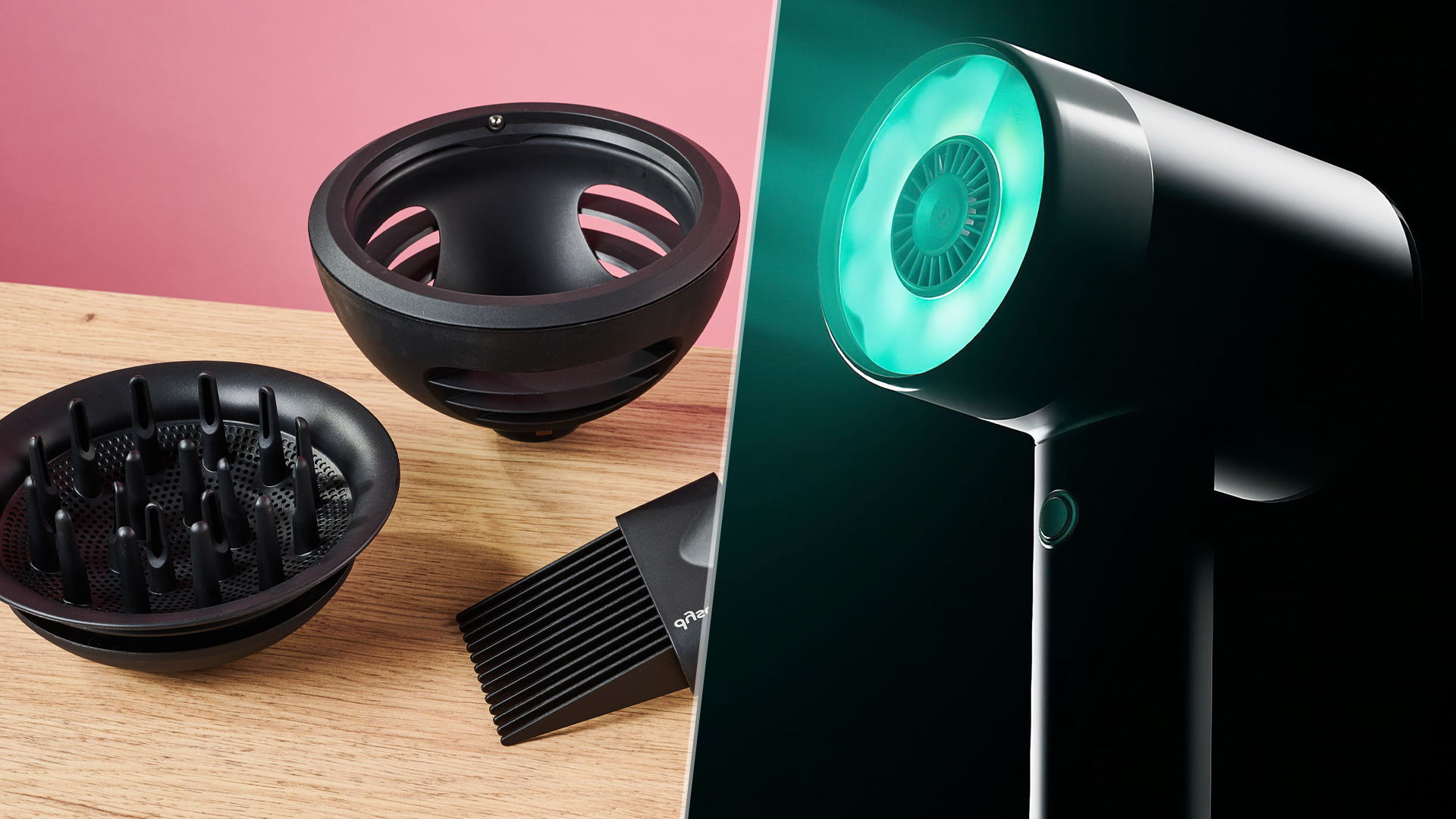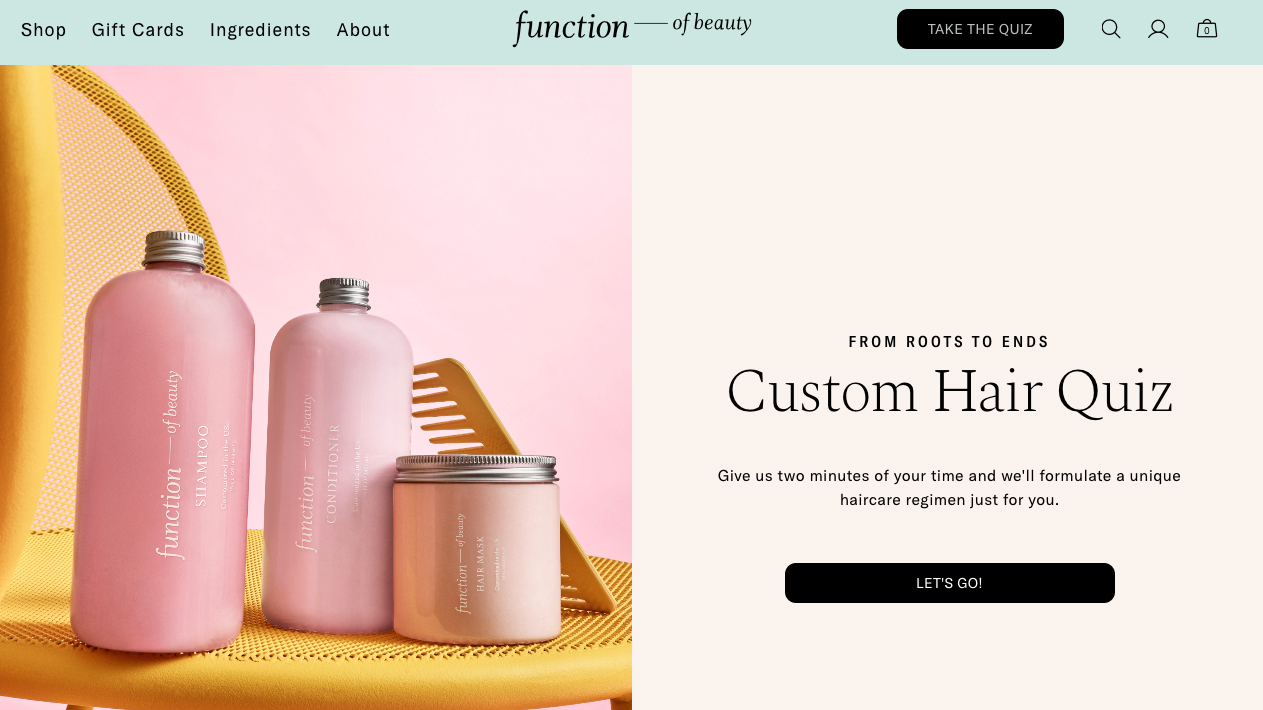6 of the hottest haircare trends for 2025 – from Infrared dryers, to scalp scents, to AI-powered personalization
We take a closer look at the tools and trends set to make it big in the new year

From heatless curls to wet-to-dry stylers, 2024 was the year of healthy hair and getting maximum impact with minimum effort. Technology played a big part thanks to smart, versatile tools like the GHD Duet Style and AI-powered personalization, while products like the Dyson Supersonic Nural shone a spotlight on the importance of looking after your scalp.
Style-wise, icy blondes, fiery reds, '60s-style blowouts inspired by Sabrina Carpenter and a continued love for textured waves proved popular. And ingredients like glycolic acid, collagen, ceramides and even mushrooms made their way into more and more haircare products.
As we look to 2025, this focus on hair health is set to stay. Stylers and services will become even smarter, and tailored to our individual hair needs, while the release of infrared dryers will ramp up following launches from Zuvi and L'Oreal.
To learn more about these hair trends, I've spoken to Bellissima's Assunta Trano and T3's Jen Ju as well as celebrity and award-winning stylists Jay Birmingham, Neil Moodie Studio, and Heather King from ENA Salon, London. Plus I've thrown in a few of my own predictions as someone who's been reviewing the best hair dryers and the best straighteners (amongst other hair gadgets and products) for almost a decade. Let's take a look at the hottest hair trends set to take off in 2025...
1. The rise of infrared
A handful of infrared hair dryers have made their way to market over the past few years but following the launch of L'Oreal Professional's AirLight Pro in November, expect to see this technology take over styling world in a much bigger way in 2025.
Unlike traditional dryers that use heat and airflow to evaporate water from the surface of your hair, infrared dryers work by penetrating your hair shaft with gentle radiant heat, effectively drying your hair from the inside out. This not only protects your hair's natural moisture and minimizes frizz, but it helps reduce the risk of heat damage without sacrificing drying speeds.

Far from it, in fact – L'Oreal Professional and Zuvi, two of the biggest brands to have launched infrared dryers recently, claim the technology can cut drying times by more than a fifth. These stylers also come with ionic technology, which smooth the hair cuticle and neutralizes static, helping to add to the sleek and shiny finish.
Get daily insight, inspiration and deals in your inbox
Sign up for breaking news, reviews, opinion, top tech deals, and more.
Elsewhere, Bondi Boost sells the Infrared Bounce Brush – a barrel brush styler that uses infrared technology to gently style your hair, with aloe-infused bristles to smooth and tame flyaways.
2. Hair health and scalp-first haircare
In a similar vein, hair health generally – whether it's through infrared technologies, or heatless styling, science-backed products or just a greater awareness – is set to dominate in 2025 and beyond.
"Over the past few years, we’ve seen consumers become more conscious about the damage they're doing to their hair," says Assunta Trano, Marketing Director at Bellissima. "This has seen trends such as heatless curls emerge as we try to limit the damage we’re doing to our hair while still trying to get the most out of styling it. Heat styling has had to follow suit and, in 2025, will emphasize safety and hair protection."

Bellissima recently released its Prodigy Air Styler with Coanda technology, which generates 200 micro-flows of air to create waves and curls gently, with less heat. All T3 dryers now have SoftAire Technology built-in, which uses a wider, gentle air stream with ions to protect the natural moisture in hair, while more brands are introducing lamellar technology to their products to leave hair looking and feeling healthy.
The term 'lamellar' refers to the thin, liquid layers (or lamellae) that form when these products are applied to the hair. These layers contain conditioning agents, amino acids, and moisturizing ingredients that bond to damaged areas of the hair cuticle, leaving it looking shiny and feeling healthy.
L'Oreal was an early champion of this technology with its Wonder Water and more brands have since come on board, including Tresemmé with its Instant Shine Lamellar Technology.
And at the heart of this healthy hair trend is the sub-trend of scalp-first tools and products. "Your scalp is the real MVP of healthy hair, and 2025 is all about giving it the love it deserves," says celebrity hair stylist, Jay Birmingham. "People are 'skinifying' their hair routines because a healthy scalp equals fabulous hair."
3. Perfume meets haircare
The fragrance boom of 2024, fueled by 'perfume tok' and the rise of designer dupes, is set to go a step further into hair in 2025. Unlike traditional perfumes, which often contain alcohol and can dry out strands, hair perfumes are specifically formulated to condition and smooth the hair while making it smell nice. As stylist King explains: “Hair scents are becoming a way to express individuality, just like regular perfumes, while offering functional benefits.”
This trend is part of a wider movement that is seeing haircare moving further into the beauty space. At the same time, hair scents reflect a growing focus on multi-purpose products: they condition, control frizz, and leave hair shiny – all while smelling good.
4. Hair growth tech
"The number one hair health concern among consumers is hair loss and thinning hair," according to Jen Ju, Marketing Director at T3. "We've seen supplements and scalp products become popular, and haircare and hair tool brands are now prioritizing minimizing heat and including features like timers and auto-pause to help address this concern."
As a result, in 2025, expect to see more products, tools and treatments that target hair loss more directly. This will range from low-level laser therapy (LLLT) scalp massagers like the Breo S3 Brush and Theradome PRO helmets, to LED combs, and microcurrent devices such as the CurrentBody Skin Hair Regrowth Device and HairMax LaserBand 82.

LLLT devices use red or near-infrared light to stimulate hair follicles, increase bloodflow, and encourage your hair to grow. Many are hands-free, meaning you can wear them as you go about your day – although maybe not to the store! – and with consistent use a few times a week, they've been shown to improve hair density and thickness (as per this 2013 study and this 2021 study).
Microcurrent devices instead use low-level electrical currents to stimulate the scalp and hair follicles. This also helps promote circulation and boosting follicle health in a similar way to LLLT products but the results typically take a little longer, which is why these products tend to be cheaper.
At the cheaper end of the price spectrum are physical scalp massagers and LED combs. These work in the same way, in terms of promoting circulation, but at a much lower level. That said, pairing any of these tools with scalp serums, probiotics, and treatments can help speed up the results, and this whole trend is part of the recent 'skinification' of haircare in which more of us realize we need to treat the skin on our scalp in the same way we treat the skin on our face.
5. Beauty meets data
Haircare hasn't escaped the AI boom and in 2025, smart apps, AI-powered devices and customized products will help us all understand our hair on a much deeper level. From analyzing moisture levels, porosity, and scalp condition, to crafting hyper-specific routines that address our individual need, AI is making waves in the haircare space.
“AI is turning bathrooms into personal labs, and consumers love beauty that ‘gets’ them,” continues stylist Birmingham. This shift reflects a wider demand for precision and performance in beauty products, with generic shampoos and conditioners are being replaced with data-driven, customized formulas tailored to specific goals, like hydration, volume, or damage repair.
"Curly hair, specifically, faces issues like dryness, frizz, and shrinkage and consumers are constantly looking for targeted solutions that enhance their natural curls while keeping them healthy," adds Trano.

"We've seen this trend developing with the rise of curl-specific haircare brands and tools that have features like gentle airflows and advanced diffusers that maintain curl shape and reduce frizz. The growing focus on curly hair technology and products shows how the industry is moving towards becoming more inclusive and offering customized solutions."
This includes brands like Function of Beauty, which creates custom shampoo, conditioner and hair mask formulas based on your answers to an online quiz about your hair type, goals, fragrance and even color. Prose offers a similar customized approach, using an in-depth consultation and AI to also consider lifestyle, location – to determine humidity, and pollution levels – and individual hair characteristics to create hyper-personalized products.

Elsewhere, brands are increasingly adding AI-powered smart sensors across their ranges that automatically monitor and adapt heat and airflow based on real-time hair diagnostics. GHD's most recent stylers, including the GHD Chronos and Duet Style, constantly monitor the temperature using sensors fitted throughout their ceramic plates. This means they know the angle and speed at which you're using the styler, and will adjust the heat to deliver faster performance. Elsewhere, the L'Oreal AirLight Pro's settings can be controlled and personalized in an app.
In 2025, such sensors and app-powered controls will become more intelligent, and more commonplace being able to automatically make adjustments to actively improve your hair, not just prevent damage.
6. Bobs, layers, and waves make it big
Finally, haircuts and styles in 2025 will focus on bold yet wearable looks such as jaw-length 'sci-fi bobs' with choppy fringes. Think Milla Jovovich in Fifth Element.
Neil Moodie Studio predicts that modern versions of the '90s-inspired 'Rachel' cut – which involves layers and face-framing, inspired by Rachel Green’s iconic cut in Friends – is set to make a comeback. "Expect 2025 to be a year of self-expression through sharp cuts, bold layers, and statement colours," the stylist says.
Victoria Woollaston is a freelance science and technology journalist with more than a decade’s experience writing for Wired UK, Alphr, Expert Reviews, TechRadar, Shortlist and the Sunday Times. She has a keen interest in next-generation technology and its potential to revolutionise how we live and work.
